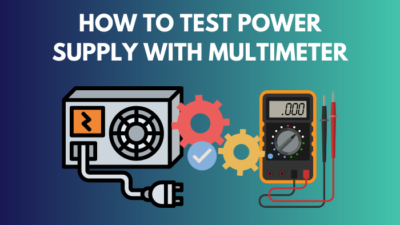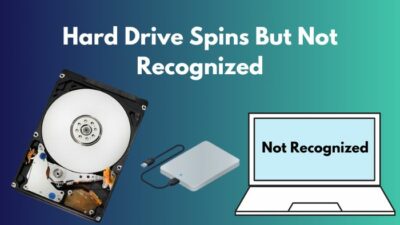AIO or All-In-One Coolers are pre-built liquid cooling system that helps to cool down your PC components effectively. Once installed properly, these coolers have no risk of leakage and can perform reliably to reduce PC temperatures.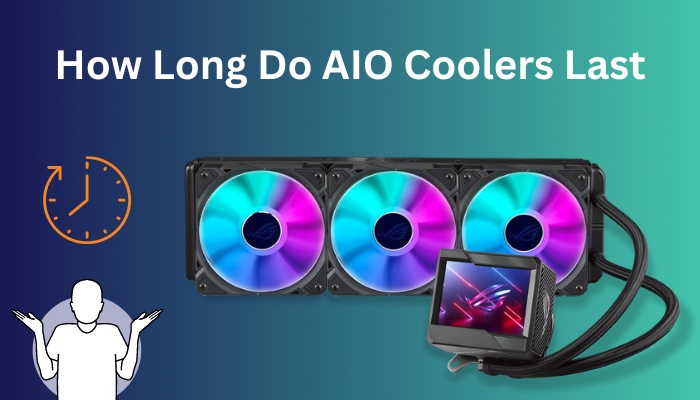
But many users are in doubt about how durable the AIO cooler is. Therefore, in this article, I will give a precise answer to this question with the necessary details you need to know about AIO cooler’s life expectancy.
So, let’s dive in!
Also, check out our separate post on do you need a CPU cooler.
How Long Do AIO Coolers Last?
Generally, AIO (all-in-one) coolers last for approximately 3-7 years if maintained properly with care. However, a custom-made loop may only endure 1-3 years. Depending on the purpose of your PC usage and it’s runtime a day, you can get more or less life out of your AIO.
Most AIO companies claim that their water cooler lasts up to 70,000 hours of use. Meaning, you can roughly use a liquid cooling system for about 8 years. Plus, reputed manufacturers like Corsair and NZXT provide 2-5 years of warranty, so you don’t have to worry about any AIO leakage or malfunction.
The durability of the AIO cooler also depends on the type of liquid you are using.
Professionally made AIO solutions have longer life spans than a custom liquid cooling setup. Yet, with a daily checkup and liquid cleaning, you can increase the custom loop’s longevity, even up to 5 years.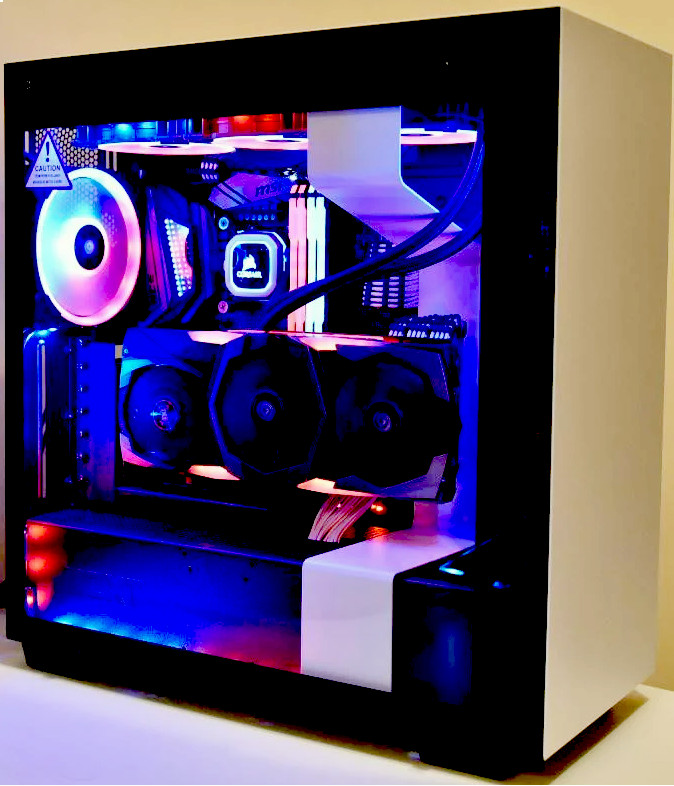
To keep your AIO coolers healthy and running, appropriate maintenance on a regular basis matters the most. Shockingly, your AIO cooler can even fail within months if you don’t take care of your AIO properly. Thus, forcing you to entirely replace the damaged AIO with a new one.
Therefore, you must clean and flush your water cooling pump and occasionally balance the liquid level inside the cooler to ensure maximum life expectancy out of your AIO cooler.
Do you know what factors can impact your AIO durability? Continue reading to learn about it.
Check out our recent article on how to find out what CPU cooler I have.
What Factors Affect AIO’s Lifespan?
Issues like faulty installation, air bubbles inside the liquid tube and corrosion can terribly affect the lifespan of your AIO. Without carefully resolving these issues, your liquid cooler can go bad very fast and lose its ability to cool down efficiently.
Let’s discuss the main factors briefly.
Here are the factors that can affect AIO’s lifespan:
Faulty Installation Issues
Installing the AIO cooling system is relatively easy. But if you handle it carelessly, there is a high chance that the AIO will leak and damage your valuable equipment.
One major key point while installing your AIO cooler is the position of the tubes and the pump.
The Tube should be placed on the bottom side of the CPU cooler and the Radiator. If you misplace the tube, it will create immense bubbling noise, and the fluid inside it will not rotate as ideally as it should.
Also, remember that the Pump should be on a lower level than the Radiator. If you even place them both on the same level, the pump may create noise and fails to push the fluid.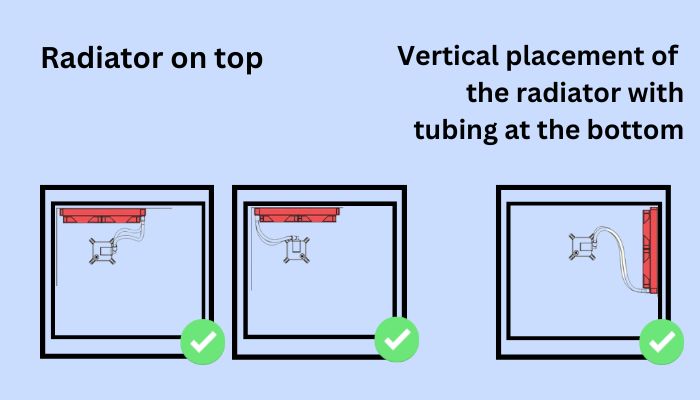
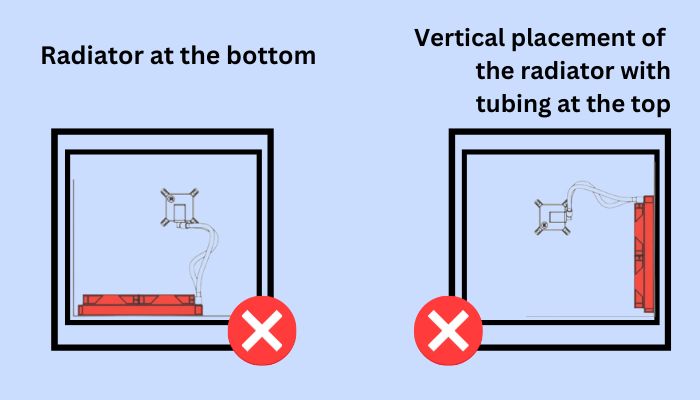
I suggest you visit a technician if you have any doubts regarding AIO installation.
Follow our guide to fix CPU temp jumping up and down.
Air Bubbles
The tubes and radiator normally make air bubbles that cause little noise in the AIO cooler. Over time, the liquid inside the cooler evaporates, creating more space for air bubbles.
With more space available, the bubbles join with each other to make a giant bubble. This can ultimately block the outgoing tank, and the pump will crash.
Therefore, if you see giant air bubbles forming in your cooling system, flush the fluid and refill it to the correct level at once.
Go and check our other article on can I use two different brands of RAM.
Corrosion
AIO coolers are basically made out of Aluminum, copper and brass. Manufacturers use a corrosive mixture to make the AIO coolers as cheap as possible.
For example, the aluminum fins of the AIO coolers are highly corrosive when mixed with cheap fluid. This results in the oxidation of aluminum.
The oxidation forms a solid-like substance that gets trapped in the radiator pipes or sticks to the cold plate. Thus, the risk of leakage increases and the lifespan of the AIO cooler decays terribly.
Check out our recent article on is ADATA RAM good.
How to Take Care of AIO Cooler
Regular maintenance is the only way to take care of your AIO cooler properly. Checking the pump, the tube and the fluid once in a while can significantly extend the life of your AIO cooler.
Keeping your AIO in top-notch condition is quite straightforward than other CPU coolers. You only have to clean the radiator and the fans often. Plus, clear the dust inside of your PC. That’s it! 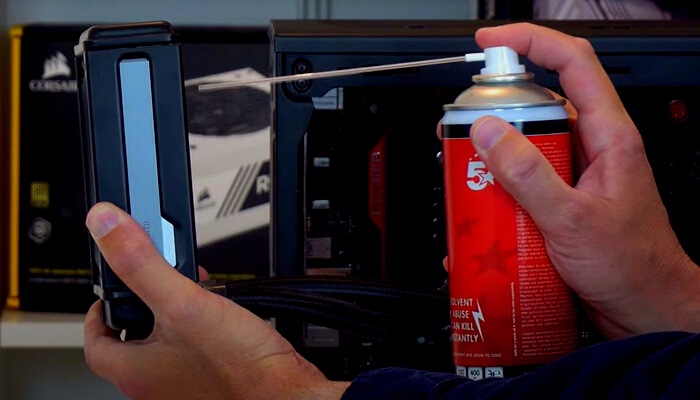
If you use a custom loop system, you better flush all the fluids at least once a year. Inspect whether everything is looking good inside the custom loop. If not, drain every ounce of the liquid and replace it with new fluid.
As time passes, the liquid in your AIO cooler will degrade and become cloudy/discolored. It will not perform as effectively as before and disrupts your PC’s beautiful ambiance.
Flushing your AIO cooler annually is the best option to avoid such a situation. Additionally, you should clean the fans, the radiator, the reservoir and all other related components to be extra cautious.
Here’s a complete guide on why is only half of my RAM usable.
FAQs
When should I replace an AIO cooler?
An AIO cooler has a life span of 5-7 years and does not wear out that easily. So you can think of replacing your AIO cooler once it runs out of its lifespan.
Do AIO coolers need maintenance?
It’s wise to perform regular maintenance of your AIO cooler to maximize its life. The only part that requires a daily check-up is the radiator and the fans. You can also inspect the pump and the fluid annually to be on the safe side.
How often should you refill your AIO?
Professionally-made AIO coolers are sealed for life, so you will never need to refill your AIO. However, for custom-made loops, you can flush and refill the fluid once a year.
Final Thoughts
To sum up, one AIO cooler can comfortably provide your system it’s essential cooling service for more years than you can expect. Almost 8 years, to be precise. Just take care of your cooler correctly, and you are good to go.
Hopefully, all your doubts are now mitigated with all the informative explanations I provided in this article.
Curious to know more about AIO coolers? Share your thoughts and queries in the comment box below.

